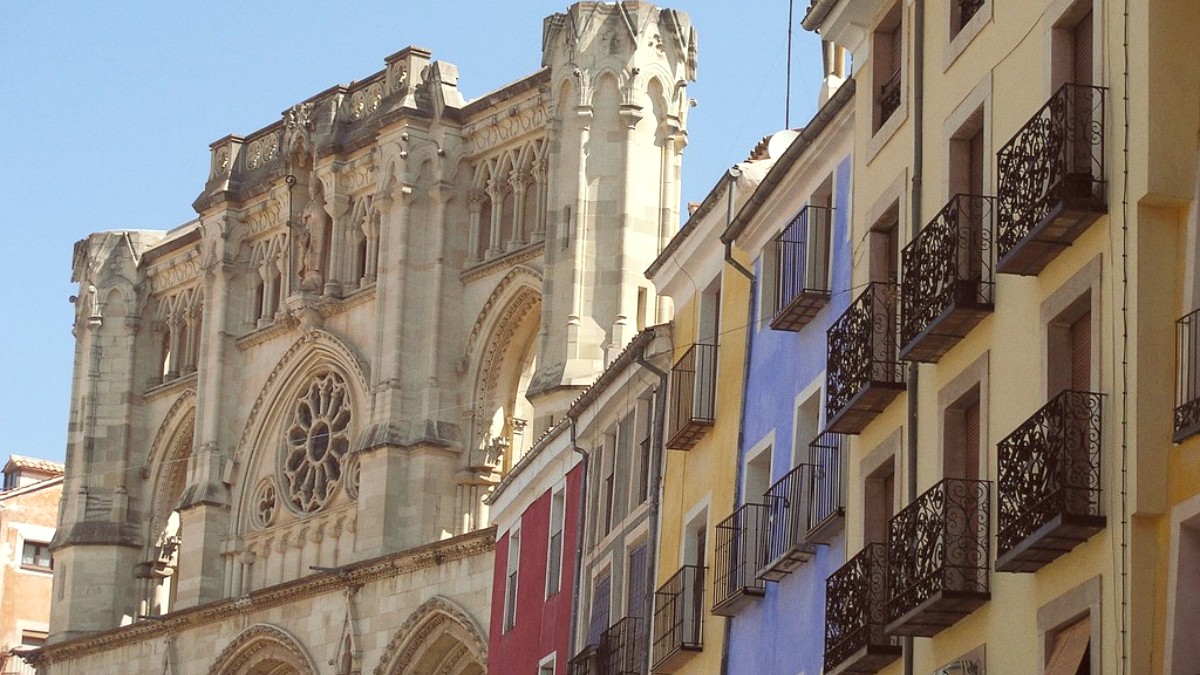
Castilla La Mancha, Spain
Spring (April-May): Temperatures are mild to warm, averaging 10-20°C (50-68°F). Moderate rainfall occurs. This period is pleasant for sightseeing, with blooming landscapes.
Summer (June-August): Hot and dry weather is typical, with average temperatures from 20-30°C (68-86°F). Temperatures occasionally exceed 35°C (95°F). Humidity levels are low. Nights can be cooler, presenting relief from the daytime heat.
City Sightseeing & Photography: The shoulder seasons (April-May, September-October) deliver pleasant weather and fewer crowds for exploring the city's sights and capturing its beauty. Cultural Events: Check local calendars, as many festivals and events occur in summer or around religious holidays like Holy Week.
Summers present intense heat. Staying hydrated and seeking shade during peak hours is wise. Plan strenuous activities for the early morning or late afternoon. Winters are very cold, with possible ice and snow, making walking on cobbled streets slippery. Wear footwear with good grip.
June-August, Holy Week
Many cultural events and festivals occur.
Crowded attractions, higher prices, hot mid-day walks.
April-May, September-October
Pleasant temperatures, fewer crowds, better prices, lush landscapes (spring) or colorful foliage (autumn).
Variable weather, occasional rain showers.
November-March
Lowest prices, fewer crowds, unique winter charm, especially with snow.
Cold temperatures, shorter daylight hours, limited outdoor enjoyment.
Summers can be intensely hot. Staying hydrated and seeking shade during peak hours is wise. Plan strenuous activities for the early morning or late afternoon.
Winters are very cold, with potential for ice and snow. This makes walking on the cobbled streets slippery. Wear footwear with good grip.
Spring and autumn deliver comfortable temperatures.
Shoulder seasons (April-May, September-October) offer pleasant weather and fewer crowds.
Shoulder seasons deliver pleasant weather and fewer crowds for capturing beauty.
Many festivals and events occur in summer or around religious holidays.
Spain is part of the Schengen Area, which simplifies travel for many nationalities.
Citizens of many countries (USA, Canada, UK, Australia, New Zealand, most EU) can enter Spain for tourism or business. Stays are up to 90 days within any 180-day period without a visa.
Citizens from countries not part of the Schengen visa-free agreement must apply for a Schengen Visa (Type C, short-stay). Applications happen at the Spanish embassy or consulate in your country of residence.
Spain levies no specific entry fees for tourists. Immigration procedures involve presenting your passport to a border control officer upon arrival at your first Schengen port of entry. Stays are electronically recorded.
The Euro (€) is the official currency. ATMs are widely available for cash withdrawals. Card payments are prevalent.
Inform your bank of your travel plans to prevent card blocks due to unusual activity.
Accommodation: Hostel/Guesthouse. Meals: Supermarket, street food, budget eateries. Transportation: Walking, bus. Activities: Free attractions, minimal paid entry.
Total Daily Cost: €65-€130
Avoid peak season for best savings.
Accommodation: 3-star hotel, mid-range apartment. Meals: Restaurants, tapas bars. Transportation: Taxis, occasional bus. Activities: Museums, tours, 1-2 paid attractions.
Total Daily Cost: €140-€300
Book train tickets in advance for discounts.
Accommodation: 4-5 star hotel, boutique hotel. Meals: Fine dining, gourmet experiences. Transportation: Taxis, private transfers. Activities: Exclusive tours, premium experiences.
Total Daily Cost: €310-€500+
Prices increase closer to travel date.
| Category | Item | Cost (EUR) |
|---|---|---|
| Accommodation | Hostel dorm bed | €20-€35 |
| Meals | Menu del día | €12-€20 |
| Transportation | Train from Madrid (AVE) | €25-€60 (one-way) |
Cuenca is generally a very safe city with a low crime rate.
Staying hydrated, seeking shade during peak hours. Carry a Reusable water bottle.
Use Sunscreen with high SPF, wear hats, and Sunglasses.
Wear comfortable, broken-in shoes for uneven terrains.
EU Citizens use EHIC. Non-EU Citizens require Travel insurance.
Pharmacies (Farmacias), marked by a green cross, offer advice and over-the-counter medications. Hospitals and clinics are available in Cuenca for emergencies.
Tap water in Cuenca and throughout Spain is generally safe to drink. Bottled water is also available.
Spain has high food hygiene standards. Eat at reputable establishments.
Cuenca is a generally safe city.
Pickpocketing can occur in crowded areas, but less prevalent than in larger cities.
The historic old town (Casco Antiguo) is safe day and night; exercise general caution in dimly lit alleys.
Spain rests in a moderate seismic zone, but significant earthquakes are rare in Cuenca's region. Flash floods occur in lower-lying rural areas during heavy rainfall.
Keep emergency contact details handy for a secure travel experience.
112 (Police, Ambulance, Fire)
092
091